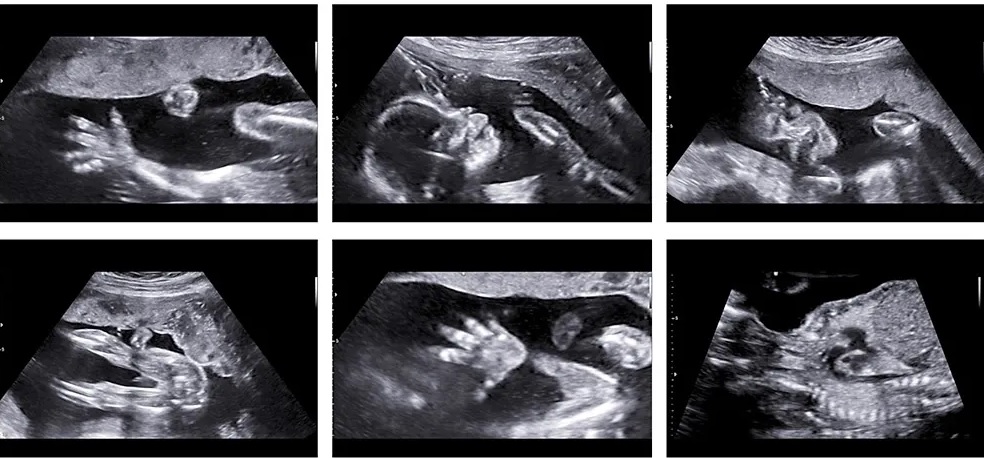Second trimester anomaly scan or level-II scan
This is a detailed scan done at 18-21 weeks of pregnancy, during which each part of the fetal anatomy is examined to see if the baby is developing normally. Special attention is paid to the brain, face, spine, heart, stomach, bowel, kidneys and limbs.
If any abnormalities are detected the significance of the findings will be discussed and the couple will be given the opportunity to have further counseling with a Fetal Medicine Consultant.
Why have a Fetal Anomaly Scan?
The vast majority of babies are normal. However all women, whatever their age, have a small chance of delivering a baby with structural abnormalities that cause physical or mental limitation. Many such abnormalities can be diagnosed and ruled out with the fetal anomaly scan.
Is it safe?
Ultrasound has been used for 40 years to monitor pregnancies. So far the evidence has been reassuring that ultrasound is safe for mother and baby. However, we think it is wise to scan only when there is good reason and to use the minimum amount of sound waves based on the ALARA principle – As Low As Reasonably Achievable.
What sort of problems can be found?
Below is a list of different types of congenital abnormality, and how likely scanning is to identify each problem.
| Problem | What the problem is | Chance of being seen |
|---|---|---|
| Spina bifida | Open spinal cord | >90% |
| Anencephaly | Absence of the top of the head | 99% |
| Hydrocephalus | *Excess fluid within the brain | 60% |
| Major congenital heart problems | 60% | |
| Diaphragmatic hernia | A defect in the muscle which separates the chest and abdomen | 60% |
| Exomphalos/gastroschisis | Defects of the abdominal wall | 90% |
| Major kidney problems | Missing or abnormal kidneys | 85% |
| Major limb abnormalities | Missing or abnormal limbs | 90% |
| Cerebral palsy | Spasticity | Never seen |
| Autism | Never seen | |
| Down syndrome | May be associated with heart and bowel problems | About 50-60% |
| * Many cases present late in pregnancy or even after birth |
This means that even if your scan is normal there is a small chance that your baby will still have a problem.
Some conditions, including certain heart defects and bowel obstructions, may not be seen until later in your pregnancy. Having your anomaly scan will most likely rule out all these conditions, as the vast majority of babies are born healthy.
Can Down syndrome or chromosomal abnormalities be seen on the scan?
This scan can also identify 50% to 60% of cases of Down syndrome, but the First Trimester Screening (FTS) test is definitely better for this. Because 30% to 50% of cases of Down syndrome appear normal on ultrasound, only an amniocentesis (testing the fluid surrounding the baby for its chromosomes) can give you this information for certain.
Sometimes babies with chromosomal abnormalities have signs called ultrasound markers. These include in order of importance thick skin behind the neck (nuchal fold), absent nasal bone, mild fluid within the ventricles of the brain, aberrant subclavian artery in the neck, occasionally short arms or legs, white spots in the baby’s heart or abdomen, or choroid plexus cysts in the brain.
While some babies with chromosomal abnormalities have these markers, it is important to remember that many normal babies also have these signs. The only way to diagnose or exclude a chromosomal problem for certain is to have an amniocentesis.


